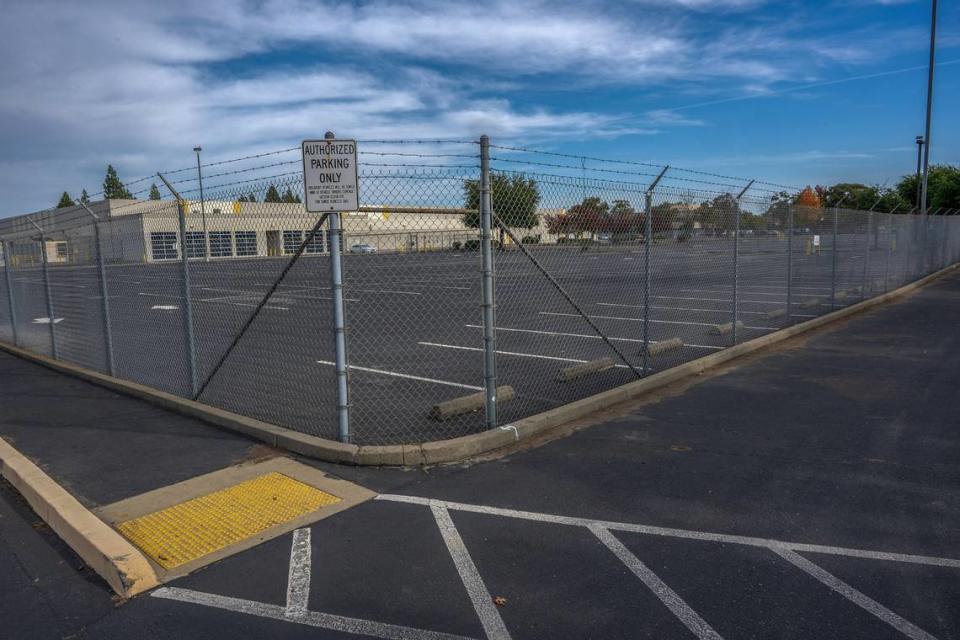Sacramento County drops shelter plans after intended homeless residents are lost in sweeps
Sacramento County has scuttled plans to open a $1.3 million sanctioned parking lot for 30 homeless people after the city displaced dozens of individuals the county intended to serve through “sweeps” and then surprised the county with an announcement that it would open a different shelter not far from the parking lot.
The lack of communication between the city and the county is a large factor in the sudden reversal. County spokeswoman Janna Haynes wrote on Wednesday, “The opening of the City’s Safe Ground wasn’t something we had planned on when initially applying for this grant and, in fact, did not know of this location until it was announced in early January.”
While the city and the county have publicly celebrated their cooperation codified in the year-old city-county “Partnership Agreement” on homelessness, the two local governments often operate in silos.
That same lack of communication was evident in the sweeps that the city undertook along Roseville Road in June, right as the county applied for a grant to establish this now-canceled parking lot. The lot was intended to help unhoused residents living in vehicles along Roseville Road.
The homeless site that vanished
In June, Sacramento County was applying for a grant from the state to stand up the parking lot. According to a grant application which was released to The Sacramento Bee in response to a Public Records Act request, the county estimated that 200 people lived in vehicles along the street.
As part of the grant application, Sacramento Assistant City Manager Mario Lara submitted a letter saying that he supported the site. In the letter, dated June 26, he said the city would “continue to collaborate, in accordance to the City/County Homeless Services Partnership Agreement, to ensure the safety and wellness of people experiencing homelessness in encampments and support longer-term strategies for connecting individuals currently residing in encampments along Roseville Road with pathways to safe and stable housing.”

Two days later, on June 28, the city began a sweep of homeless people living in vehicles within city limits on Roseville Road. As The Sacramento Bee reported in December, after the people who had been living there were forcibly scattered, the county appeared to completely lose track of the people it intended to serve with the parking lot. High-ranking county officials believed they were still on Roseville Road months after they had been displaced.
At a Nov. 7 meeting of the Board of Supervisors, the county’s director of the Department of Homeless Services and Housing, Emily Halcon, said that there were people “currently residing in encampments along Roseville Road.”
On Nov. 15, Supervisor Rich Desmond, then the chair of the Board of Supervisors, wrote in a statement that there were “still dozens of vehicles that use the area to park and sleep after hours” and that the parking lot was “very needed in this particular area.”
And on Dec. 8, Halcon wrote to The Bee that the 30 spots were “set to open in early 2024.”
On Jan. 23, Haynes said that the parking lot plan had been scrapped.
Cost estimates had gone up, she said, and the contractor’s estimate for the project that had always been scheduled for January rose, “factoring in the wet season.”
“Initially, when the County applied for grant funding for the Watt location, there was an excess of parked vehicles,” she wrote in an email. “However, the current situation shows a significant reduction in the need for Safe Parking in the area. The City of Sacramento has opened a shelter site a few miles away, serving the broader community.”
The “reduction in the need” in the area was primarily the result of the city towing 30 vehicles that people lived in and forcing another 11 vehicles to leave the area in the late-June sweep. City spokesman Tim Swanson previously said that only seven of the people who had lived among those 41 vehicles went into a temporary shelter.
Grant money to go elsewhere
Where the rest of the people, who had their makeshift homes removed by the city, went is unclear. On any given night, the waitlist for shelter in Sacramento runs over 2,000.
The county is moving forward with plans to establish a larger shelter on the same Watt Avenue site where the parking lot would have been located, Haynes said. The county will redirect the grant money for the parking lot elsewhere. A new site has not yet been chosen.
Experts have said that, in addition to causing waste, delays and confusion at the administrative level, sweeps are harming homeless people and undermining efforts to address the homeless crisis.
“What you’re doing is you’re effectively just displacing this individual,” said Jamie Chang, a UC Berkeley professor who studies homelessness. “And oftentimes, it’s not just displacement, right? Folks are actually dispossessed of their property.” Sweeps, she said, “are not just counterproductive; they’re actively harmful.”
She has seen that in her own work, she said, and it has also borne out in other research. One study published last year in the Journal of the American Medical Association determined that continual sweeps can contribute to excess deaths among homeless people. The increase found in that study was between 16% and 24%.

